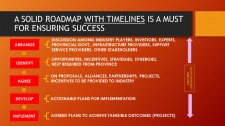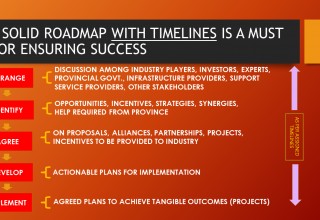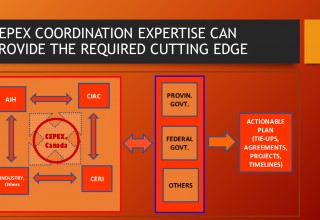Alberta, Canada is a Great Destination for a Petrochemicals Wave, but What Would It Take to Monetize This Potential?

CALGARY, CANADA, August 28, 2017 (Newswire.com) - These days there is a buzz in the US downstream sector about a second ‘wave’ of new petrochemicals projects in that country. For those who may not know, the so-called previous ‘wave’ of petrochemicals is already underway in the US. However, this approach paper by CEPEX Center for Excellence in Project Execution, is not about the petrochemicals wave in the US but about how a similar wave could be made possible in Alberta, Canada.
Brief summary of the current wave of petrochemicals projects in the US
Alberta is well positioned to develop into a petrochemicals hub and has the right mix of feedstocks available to support this development. What is needed is a concerted and focused approach by all stakeholders including the local, provincial and federal government to send the right signals and create an environment for continued and sustainable development.
Parth Mukherjee, Expert Principal, CEPEX Canada
As part of the current wave of petrochemicals projects in the recent years, four crackers totaling more than 5 million tonnes/year of ethylene capacity are supposed to start operations this year along the U.S. Gulf Coast. Five more are under construction and expected to begin operations before the end of 2019.
The coming of the second wave of downstream projects in the US
Already major industry players are actively working on their plans for more crackers and petrochemical products in USA – most of the FIDs are expected this year. As well, around 5 Bcf/day of additional liquefied natural gas (LNG) export capacity is expected to be completed in the US by 2020.
What about the current Canadian oil and gas outlook?
While there is buzz in the US about a second ‘wave’ of downstream projects, the current situation with respect to Canadian oil and gas industry is not very encouraging. The media reports suggest a bleak outlook:
· Canadian Association of Petroleum Producers (CAPP) says regulations will cost industry billions;
· Canadian pipeline projects that can carry bitumen to tidewater are facing uncertainties;
· Canadian oilpatch may defer $19 billion in capex spending if low oil prices persist;
· Canadian LNG projects are virtually crawling. The Americans started later but are now moving ahead at a brisk pace and have already started making shipments to other countries. Also, they are tying up multi-year supply agreements with various countries worth billions of dollars.
Downstream industry scene in Alberta
A wave of investment in petrochemical plants in the late 1990s and early 2000s turned Alberta into one of the world’s largest petrochemical producers and the leading producer in Canada.
However, over the last 10-12 years this sector did not receive much attention and/or promotional support from the government (federal or provincial) or the investors. Apart from the aforesaid benign neglect of the petrochemicals industry, towards the middle of last decade, a gradual decline in the supply of feedstock derived from conventional natural gas liquids forced the industry to search for alternative feedstock sources. This added to the dampened interest in the downstream sector in the province.
Alberta advantage – waiting to be seized
However, the situation with respect to the natural gas and the NGLs in the province has changed for the better in the recent years. Global energy pricing dynamics have resulted in sustained low feedstock prices for petrochemical producers in Canada. Increasing NGLs availability, low feedstock prices, present an opportunity for investment in Alberta across the value chain.
The current provincial government of Alberta has been giving attention to this sector. It is working with various entities, like, Canadian Energy Research Institute (CERI), Chemistry Industry Association of Canada (CIAC), Alberta Industrial Heartland (AIH) and Resource Diversification Council (RDC) to boost petrochemicals industry in Alberta.
It has also created Energy Diversification Advisory Committee (EDAC) for obtaining feedbacks and ideas. The current provincial government’s efforts resulted in the announcement of two multi-billion-dollar petrochemicals projects in Dec 2016.
But do these two projects constitute a Wave? Not really, because Alberta has all the major ingredients that can help realize and sustain a ‘wave’ – a chain of new petrochemicals projects in Alberta.
But how to ensure Alberta too rides a petrochemicals’ wave?
Steven Covey says, “Begin with the end in mind.” To realize a sustainable wave in Alberta, there must be a proper road-map of activities with timelines – Alberta government’s intent and its engagement with the various entities, cited above, need to be put in to a framework of time-bound goal-directed sequenced activities which has consultations/discussions with industry players, investors, experts, support service providers and other stakeholders properly rolled in to it. This road map would need to be implemented with urgency and through proper coordination.
The consultations/discussions, mentioned above, must be focused and geared towards identifying opportunities, incentives, strategies, synergies, help required from the province, and forging agreements on proposals, alliances, partnerships.
These agreements then must be converted into actionable plans with time-lines for implementation: Actionable plans towards the on-purpose production of olefins, methanol and other derivative products in Alberta.
CEPEX, Canada coordination advantage
To ensure the success of the aforementioned highly challenging roadmap, expert coordination support is a must. CEPEX, Canada would be happy to provide the necessary coordination expertise in this regard.
CEPEX, Canada also has the required experience of implementing downstream projects from inception to completion which will come handy in fine-tuning the coordination efforts required to turn a potential into reality.
Conclusion
Alberta, Canada too can have a ‘wave’ of petrochemicals projects because all the necessary ingredients for a wave to take place are available in the province. However, such a wave must be pursued vigorously and with utmost urgency before it is too late; USA is already pulling away in this game and may partake big time in Canadian NGL and natural gas supplies.
Further, to realize this wave, the Alberta government, industry players and all the stakeholders would need to be brought together for focused consultations/discussions and generating time-bound actionable plans for on-purpose production of Olefins, methanol and their derivative products in the province. To accomplish successful outcome of such an ambitious endeavour, specialized coordination efforts would be called for. CEPEX, Canada is happy to provide its coordination expertise towards this end. It is up to the Province and the various entities, it is engaging with, to make the move, join hands and work in tandem.
About the Center of Excellence in Project Execution, Canada:
Based in Calgary, Canada, the Center of Excellence in Project Execution is a boutique management consultancy serving oil sands, oil & gas sectors providing niche consulting services covering cost reduction, project management, special projects and continuous improvement.
Contact
Parth Mukherjee, P.Eng, PMP
Expert Principal, Centre for Excellence in Project Execution, Calgary, Canada
1-403-397-8469, parth@projectexecution.consulting
Anirudh Kumar, P.Eng
Principal, Construction & Project Manager, Centre for Excellence in Project Execution
1-403-397-8765, kumar@projectexecution.consulting
Source: CEPEX, Center for Excellence in Project Execution

